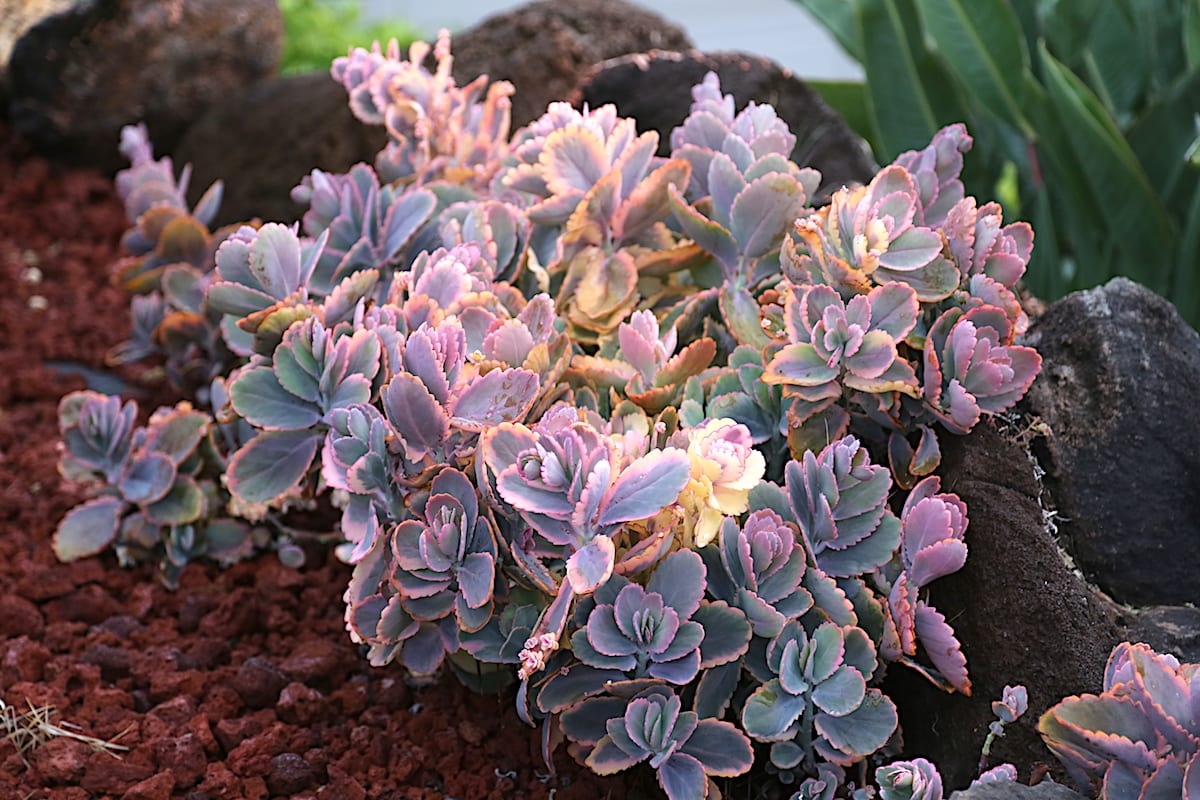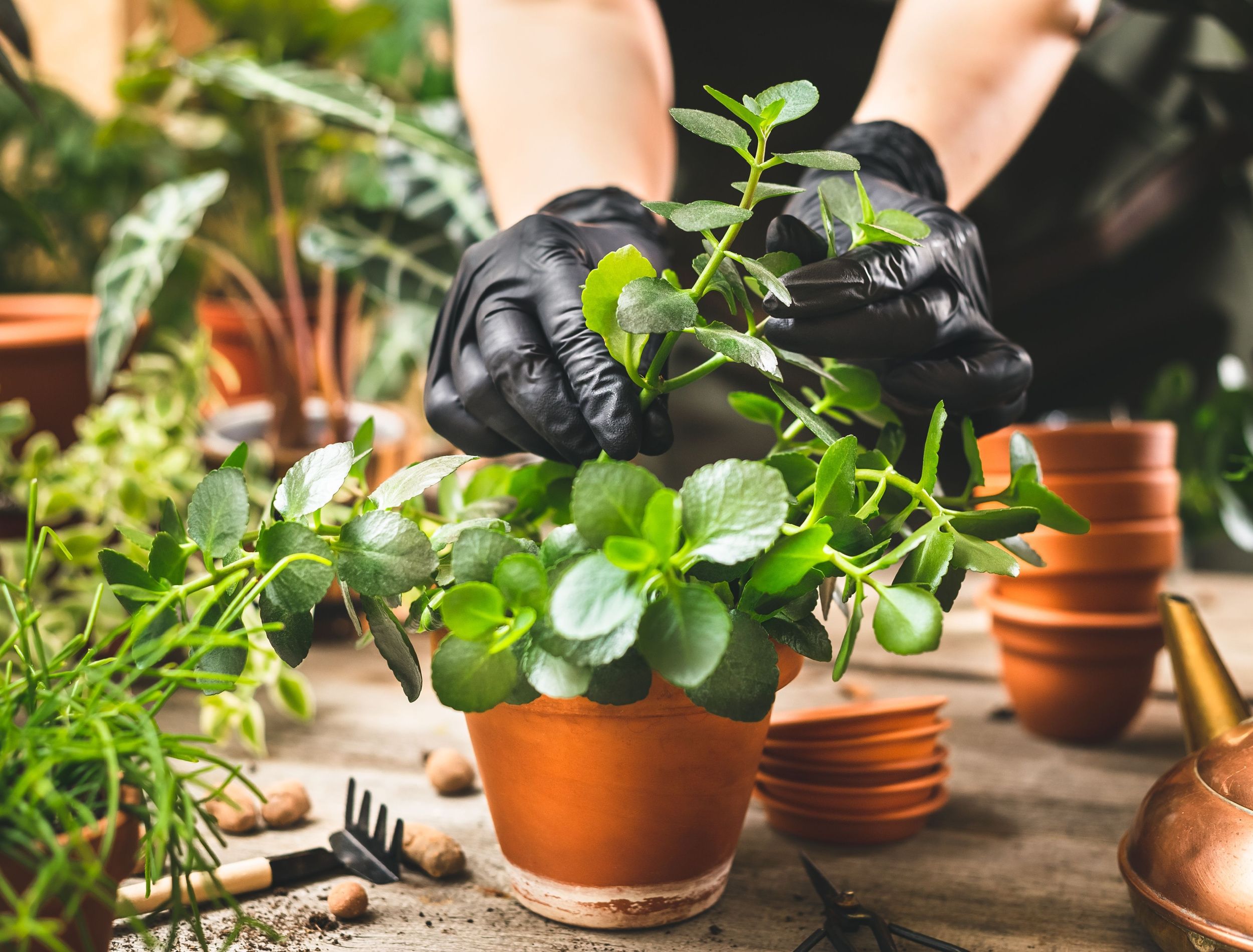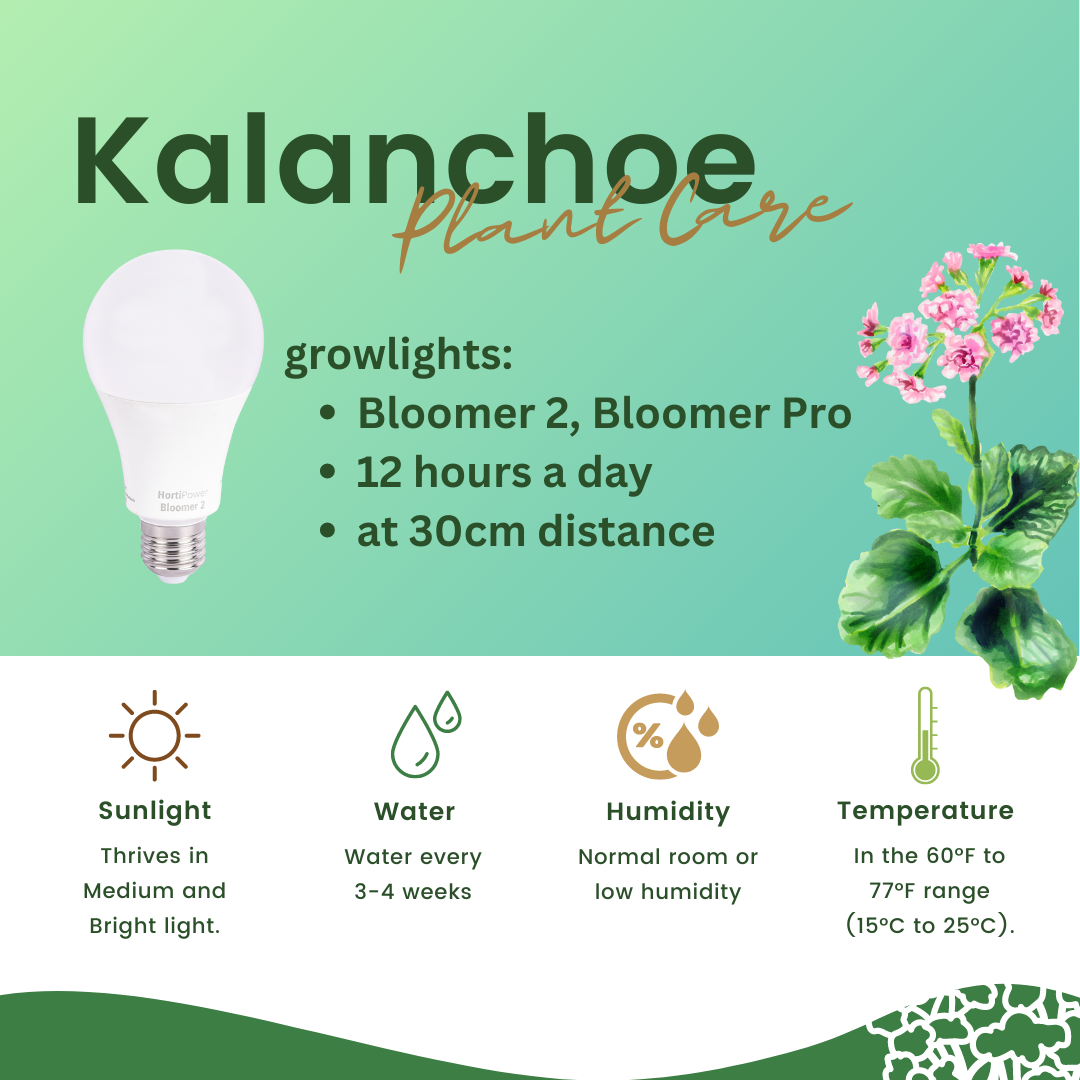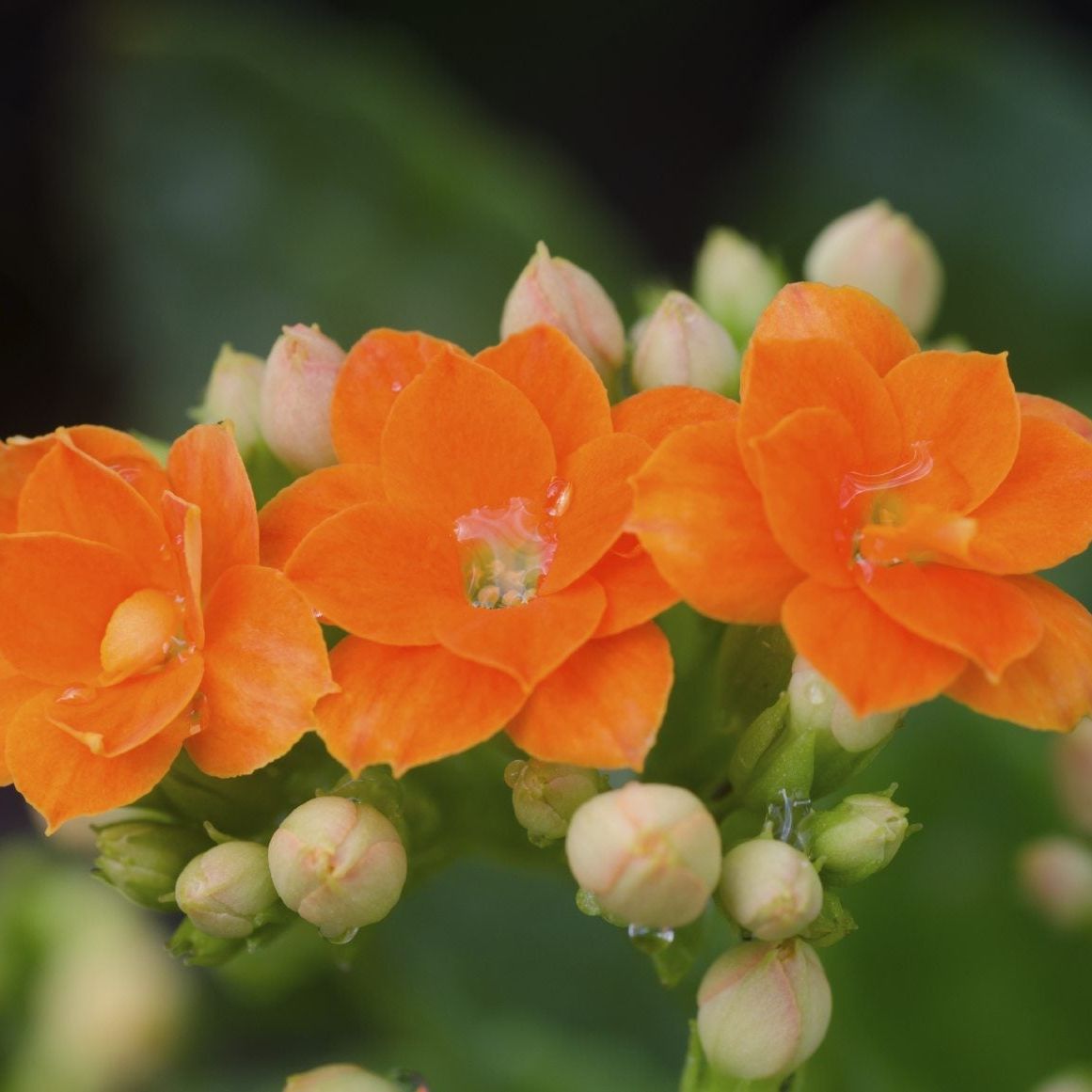
Growing and Caring for Kalanchoes
Kalanchoes are stunning, low-maintenance flowering plants that are perfect for growing both indoors and outdoors. Known for their thick, fleshy leaves and vibrant flowers in shades like red, white, yellow, and more, they add a burst of color to any space.
One of the best things about Kalanchoes is that, as succulents, they don’t require a lot of care. They’re hardy and adaptable, making them great plants for beginners and experienced gardeners alike. Here’s everything you need to know to grow and keep your Kalanchoe healthy for years.
What is a Kalanchoe Plant?

Kalanchoes are succulents with a wide variety of sizes, colors, and forms. These plants are popular because they’re easy to grow and thrive in many different environments. They’re native to South Africa and Madagascar, which explains their hardiness.
The plant’s thick, waxy leaves often have scalloped edges, and they form beautiful rosettes. Kalanchoe flowers bloom in clusters above the leaves, and some hybrids even have 26 petals per flower! These plants can bloom year-round and are mostly grown for their attractive foliage and vibrant blossoms.
Popular Kalanchoe Varieties

There are over 100 Kalanchoe species, but some are more popular than others. Here are a few you might come across:
- Kalanchoe tomentosa (Panda Plant): This hybrid succulent has soft, velvety leaves covered in white hairs, resembling a panda’s fur. It’s perfect for indoor gardening and easy to care for.
- Kalanchoe blossfeldiana (Flaming Katy): Known for its bright red and orange hues, this is one of the hardiest and easiest-to-grow Kalanchoes. Great for beginners!
- Kalanchoe uniflora (Mother of Thousands): This drought-tolerant succulent can survive with minimal water and thrives in temperatures as low as 32°F.
- Kalanchoe pinnata (Strawberry Kalanchoe): This variety features rosette-shaped leaves and clusters of yellow flowers.
- Kalanchoe porphyrocalyx (Pearl Bells): This variety has slender, graceful leaves and beautiful pendant flowers, often seen in houseplant collections.
Kalanchoe: Perennial or Annual?

Kalanchoe is a perennial succulent, meaning it can live for several years, provided it’s given the right care. While it’s often mistaken for an annual due to its shorter bloom period, Kalanchoe can thrive for many years if maintained properly. Its growth is slow, taking two to five years to mature fully.
Kalanchoe Care Overview

Here’s a quick breakdown of what Kalanchoe needs to thrive:
| Factor | Condition |
|---|---|
| Soil | Well-drained soil |
| Water | Moderate watering, letting soil dry between cycles |
| Sunlight | 10–12 hours of indirect sunlight |
| Temperature | 68–70°F (20–21°C) |
| Fertilizer | Feed biweekly during the summer |
| Propagation | Stem or leaf cuttings |
| USDA Zone | Zones 10–12 |
How to Propagate Kalanchoe

Kalanchoes are easy to propagate through stem or leaf cuttings. Here’s how to do both:
Leaf Cutting Propagation
- Take a healthy leaf from your Kalanchoe.
- Place it on dampened soil. In about 10 days, the leaf will begin to take root and sprout.
- Once the new plant has 4-5 leaves, transplant it to a larger pot.
Stem Cutting Propagation
- Cut a healthy side branch from the mother plant.
- Let the cutting dry out for 4-5 days before planting it in soil.
- For faster root growth, you can dip the cutting in rooting hormone.
- Keep the soil damp and place the cutting in a partial shade until it roots.
- Once the roots form, move it to a larger pot and care for it like a regular Kalanchoe.
How to Transplant Kalanchoe

If your Kalanchoe has outgrown its pot or you need to refresh the soil, it might be time to transplant it. Here’s how to do it:
- Carefully remove the plant from its container.
- Cut away any dark, rotting roots and discard them.
- Place the plant in a fresh pot with well-draining soil.
- Spread the roots for better air circulation before adding the new soil.
- After transplanting, tap the pot gently to level the soil and place it in a partial shade to help the roots establish.
Kalanchoe Care Tips

Kalanchoe is a low-maintenance plant, but here are a few tips to ensure it stays healthy:
Soil
Kalanchoes need well-drained, slightly alkaline soil. You can mix perlite, peat moss, and organic compost to create the ideal soil. A clay pot with a drainage hole is best, as it helps the soil breathe and prevents water from stagnating.
Watering
Kalanchoes are succulents, so they don’t need frequent watering. Let the soil dry out between watering to avoid root rot. In winter, water only twice a month, and in spring and summer, water every 3-4 days when the soil dries out. Always avoid getting the leaves wet.
Fertilizing
Fertilize your Kalanchoe every two weeks during the growing season (spring and summer). Use a fertilizer with a higher potassium concentration to encourage more blooms. But be cautious not to over-fertilize, as this can damage the roots.
Temperature and Sunlight
Kalanchoe prefers warm conditions and indirect sunlight. Keep it in a place where it gets 10-12 hours of indirect light, like near a south-facing window. In winter, it can tolerate lower temperatures, but don’t expose it to freezing conditions.
Pruning and Deadheading

If you notice any curled, unattractive leaves, feel free to pinch them off. This helps the plant focus on healthy growth. You can also prune the plant to shape it, using pruning shears to cut back stems. Regular deadheading—removing spent flowers—encourages new blooms.
How Often Does Kalanchoe Bloom?

Kalanchoe typically blooms in late winter to early spring, and the flowers usually last between 2-4 weeks. Some species, like Kalanchoe blossfeldiana (Flaming Katy), can bloom every 2-3 months under the right conditions. To encourage more blooms, ensure it gets the proper care, remove old flowers, and reduce watering during the resting period.
How to Save an Overwatered Kalanchoe

Overwatering is a common mistake with succulents, and it can lead to root rot. If your Kalanchoe has been overwatered, follow these steps:
- Remove any excess water in the pot.
- Let the soil dry out, and place the plant in indirect sunlight.
- Inspect the roots for rot—cut away any black or mushy roots.
- Replace the soil and replant the Kalanchoe in a well-draining pot.
If the plant doesn’t recover, try propagating a healthy leaf or stem to start anew.
Is Kalanchoe Toxic to Pets?

Yes, Kalanchoe is toxic to pets such as dogs and cats. The leaves and flowers contain bufadienolides, which can cause gastrointestinal distress if ingested. If you suspect your pet has eaten part of the plant, contact a veterinarian immediately.
FAQs for Caring for Kalanchoe Plants
1. What are the ideal growing conditions for Kalanchoe?
Kalanchoe thrives in bright, indirect light. They can tolerate some direct sunlight, but too much exposure can cause the leaves to burn. They prefer well-draining soil and temperatures between 60-85°F (16-29°C). Avoid placing them in areas with drafts or fluctuating temperatures.
2. How often should I water Kalanchoe?
Kalanchoes are succulents, so they don’t require frequent watering. Allow the soil to dry out completely between waterings. During the growing season, water every 1-2 weeks, and in the winter, water even less frequently as the plant goes into a dormant phase. Overwatering can cause root rot, so ensure the pot has good drainage.
3. How can I encourage Kalanchoe to bloom?
Kalanchoe is known for its vibrant flowers, which typically bloom in winter or early spring. To encourage blooming, ensure the plant gets at least 6 hours of indirect sunlight each day. A cool period of darkness for 14 hours each night for a few weeks may also trigger blooming. Regular pruning of spent flowers can promote new blooms.
4. Can Kalanchoe be grown indoors?
Yes, Kalanchoe can be grown indoors, provided it gets enough light. Place it near a bright window where it receives indirect sunlight. Make sure to rotate the plant occasionally to ensure even growth on all sides.
5. Can I grow Kalanchoe outdoors?
Kalanchoe can be grown outdoors in warm climates (USDA zones 10-11). In cooler areas, it’s best to keep it as an indoor plant during the colder months. Outdoors, it should be placed in a well-draining, sunny spot where it can get plenty of light.
6. How do I fertilize Kalanchoe?
Fertilize Kalanchoe during the growing season (spring and summer) with a balanced, water-soluble fertilizer diluted to half strength. You can fertilize every 4-6 weeks. Avoid fertilizing in the fall and winter, as the plant’s growth slows down during this time.
7. Why are the leaves on my Kalanchoe turning yellow?
Yellowing leaves can be a sign of overwatering, poor drainage, or a nutrient deficiency. Ensure the plant is in a well-draining pot and that the soil dries out between waterings. If the plant is kept in low light or too much direct sunlight, it can also stress the plant and cause yellowing leaves.
8. How do I propagate Kalanchoe?
Kalanchoe can be propagated from leaf or stem cuttings. Cut a healthy leaf or stem, let it dry for a day or two to callous over, and then plant it in well-draining soil. Keep it in bright, indirect light and water lightly until roots develop.
9. What pests should I watch out for with Kalanchoe?
Kalanchoe is relatively pest-resistant but can occasionally suffer from aphids, mealybugs, or spider mites. Regularly check your plant for pests and wipe the leaves with a damp cloth if necessary. If an infestation occurs, treat the plant with insecticidal soap or neem oil.
10. How do I prune my Kalanchoe?
Pruning Kalanchoe helps maintain its shape and encourages more compact growth. After flowering, trim back spent blooms and any leggy or damaged stems. You can also trim back the plant to encourage fuller growth. Use sterilized pruning shears to avoid introducing diseases.
11. Can Kalanchoe be toxic to pets?
Yes, Kalanchoe is toxic to cats and dogs if ingested. It contains compounds that can cause symptoms such as vomiting, diarrhea, and lethargy. If you have pets, keep your Kalanchoe in an area where they cannot reach it.
Conclusion
Kalanchoes are beautiful, low-maintenance plants that can add a splash of color to any space, whether indoors or outdoors. By following the simple care guidelines—proper watering, lighting, and occasional pruning—you can enjoy vibrant blooms and healthy growth year-round. Keep an eye on pests, and be mindful of your pets around the plant. Happy gardening, and enjoy your thriving Kalanchoe!

